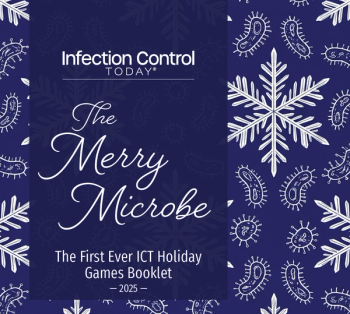
mRNA-1647: A Promising CMV Vaccine Advances to Phase 3 Trial
The investigational mRNA-1647 vaccine discussed at IDWeek 2023 shows great promise in the fight against cytomegalovirus (CMV) infection. Developed using messenger RNA technology, it incorporates essential CMV antigens and has demonstrated safety and effectiveness in clinical evaluations.
Ensuring a safe and effective method to guard against cytomegalovirus (CMV) infection remains a top public health priority. One promising approach is the investigational mRNA-1647 vaccine, which leverages messenger RNA technology. This vaccine incorporates 6 mRNA sequences, encoding 2 critical CMV antigens—glycoprotein B and the pentameric glycoprotein complex—encapsulated in lipid nanoparticles in a lyophilized presentation.
Sandeep Basnet, MD, will present a poster about this vaccine study “Safety and Immunogenicity of mRNA-1647, an mRNA-Based Cytomegalovirus Vaccine in Healthy Adults: Results of a Phase 2, Randomized, Observer-Blind, Placebo-Controlled, Dose-Finding Trial” at IDWeek 2023, held from October 11 to 15, 2023, in Boston, Massachusetts,
The clinical evaluation of mRNA-1647 demonstrated its overall safety, tolerability, and ability to induce antigen-specific immune responses across various dosage levels. This comprehensive assessment encompassed both CMV-seronegative and -seropositive participants. Based on these findings, the 100-µg dose of mRNA-1647 was selected for advancement to the phase 3 trial.
Among the 315 adults involved in the trial, solicited adverse reactions (ARs) following the first dose were reported in the following percentages: 54.7% (placebo), 84.4% (50 µg), 87.5% (100 µg), and 91.1% (150 µg) for CMV-seronegative adults, and 59.3%, 94.4%, 94.6%, and 94.4%, respectively, for seropositive adults. The most frequently reported local and systemic solicited ARs after the first dose included pain (mRNA-1647: 73.3%-89.2%; placebo: 18.5% to 18.9%) and fatigue (mRNA-1647: 28.9% to 72.2%; placebo: 25.9% to 30.2%) across both serostatus groups. These trends in ARs were consistent following the second and third doses. Importantly, all mRNA-1647 groups displayed neutralizing antibody (nAb) titers against epithelial cell infection and fibroblast infection.
Notably, "robust nAb responses against epithelial cell infection were observed after each mRNA-1647 dose and sustained through the end of the study (12 months after the last dose); nAb titers against epithelial cell infection in seronegative mRNA-1647 100-µg recipients exceeded the geometric mean titer of all seropositive recipients at baseline," as noted by the authors.
This phase 2 trial, conducted in CMV-seronegative and -seropositive healthy adults aged 18-40, followed a randomized, observer-blind, placebo-controlled, dose-finding design (ClinicalTrials.gov identifier: NCT04232280). In part 1, male and female participants were randomly assigned in a 3:1 ratio to receive mRNA-1647 (50, 100, or 150 µg) or placebo at months 0, 2, and 6. In part 2, females were randomized in a 3 to 1 ratio to receive mRNA-1647 at 100 µg or placebo at the same intervals. The primary endpoints included the ongoing safety evaluation throughout the study, encompassing solicited adverse reactions (ARs) within 7 days after each dose, as well as neutralizing antibody (nAb) titers against epithelial cell infection and fibroblast infection, which were monitored for up to 12 months following the final dose.
The combined results from parts 1 and 2 were analyzed to derive these conclusions.
Newsletter
Stay prepared and protected with Infection Control Today's newsletter, delivering essential updates, best practices, and expert insights for infection preventionists.






